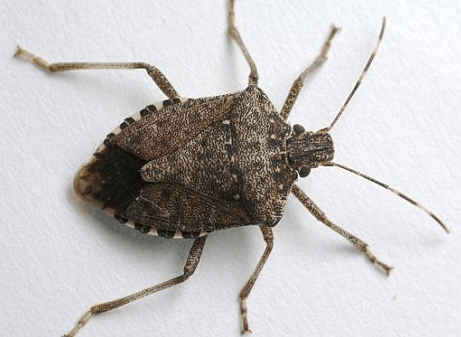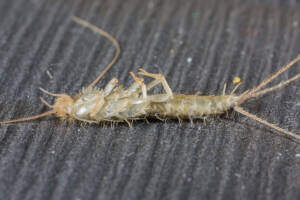Kansas City Ticks Lyme Disease

Ticks & Lyme Disease
There are 4 life stages ticks have: egg, larva, nymph, adult. From the larval stage the tick can benefit from blood from a host (human or creature) by means of a tick bite. After a blood feast the tick heads toward the following, bigger, stage. In the adult stage just the female tick needs blood, in particular for the creation of eggs, in which case the tick can enlarge itself enormously. The male tick doesn’t really require blood and just feeds infrequently or as needed which is rarely.
Dog ticks can affect humans adversely. Rough Mountain spotted fever, babesiosis and different infections found in tick-plagued creatures can likewise influence people with far more prominent long-lasting outcomes. Older people who become tick bite host frequently experience the ill effects of long-lasting joint ailment and joint inflammation like symptoms. Children bitten by ticks can likewise create and unsightly bulls eye type rash that is itches and painful.
You can use an antibiotic to help with Lyme disease as long as you catch it early. In certain regions of the country the risk of getting Lyme disease is very low. Kansas and Missouri are not one of them that offers relief from Lyme disease.
The tick insect is liable for spreading Lyme ailment, Ixodes pacificus (in the west) and I. scapularis (in the east) have a bigger geographic dissemination contrasted and the circulation of announced instances of Lyme infection. It is critical to take note of that while most Lyme ailment cases happen in the northern eastern US, there is noteworthy danger of gaining Lyme illness in zones outside that district, as can be found in California, where a portion of the regions wherein both vector ticks are built up and Lyme malady is endemic are bigger than certain states in the east.
We have known about ticks for years through the experts and science; ticks are the main source of spreading the disease of Lyme,a disease that effects neurological, joints, and symptoms like the flu. Even after you receive treatment, the symptoms of Lyme can linger long after. However, there is more ticks being discovered. This gives us more reason to be on the lookout for ticks and its danger.
Prevention Tips For You & Your Property
The exposure of ticks is where you frequent. Change a few habits by following a few simple but fundamental steps:
- Pieces of clothing: When voyaging outside, make a point to conceal your arms, legs, and neck to maintain a strategic distance from tick bites. When you’ve returned, shed these things of apparel quickly and wash them to eliminate any ticks attached to the clothes.
- Review: Not just should you altogether take a look at yourself, your family, and your pets for ticks routinely, yet you ought to likewise enroll the assistance of experts, who can scour your property for the indications of tick infestations.
- Treatment: There are lots of DYI products that can help keep ticks from attaching to your clothing and skin. However, property protection should be left to the professionals.
Stink Bugs In Your Kansas City Home

Tips to Get Rid of Stink Bugs in Your Kansas City Home
Since its fall, it’s formally indoor the stinky bug season. Before it becomes winter, earthy colored marmorated smell bugs are searching for happy with overwintering destinations to spend the winter months—and that can regularly imply that they may figure out how to sneak into your home. While the smell that a stink bug discharge isn’t hazardous, they are certainly an annoyance. Fortunately, there are steps you can take to dispose of stink bugs in your home—without managing the undesirable smell.
Stink Bugs

Brown Marmorated Stink Bugs
Try not to crush them
It’s normal that somebody’s first response when they see a bug is to need to crush it—particularly when that bug is in your home. However, when it’s a smell bug, crunching it or extraordinarily upsetting it could incite it to discharge the foul scent it was named after. Here are a couple of speedy realities to assist you with recognizing stink bugs so you know not to crush it when you see it:
● Stink bugs are generally a large portion of an inch long, and 33% of an inch wide.
● Stink bugs have an unmistakable, triangularly formed back that is regularly contrasted with a shield.
● The obtrusive earthy colored marmorated smell bug is generally completely earthy colored with some white stripes on the reception apparatuses and around the edge of its body while other smell bug species typically go in shades of green and earthy colored. Smell bugs discharge the scent through gaps in their mid-region, and the foul smell can regularly smell up what it is near. Along these lines, the initial step to dispose of stink bugs in the house without the smell is to oppose your underlying impulse to execute a smell bug on the spot.
related article: Do Stink bugs really stink?
Shouldn’t something be said about utilizing a vacuum?
While you can utilize a vacuum to suck up the stink bugs in your home, you may not have any desire to, as the smell bug scent may in any case be discharged through the vacuum canister or cause the entire vacuum to smell. Truth be told, a few people may commit a whole vacuum to this undertaking in the event that they choose to do it. In the event that you utilize a bag-less vacuum, you despite everything risk the vacuum smelling considerably after you’ve disposed of the bugs. Dead smell bugs can leave a buildup and a scent that is hard to expel.
How would I dispose of smell bugs without a vacuum?
On the off chance that you would prefer not to commit a vacuum to smell bug exposure or would prefer not to chance the smell getting away, there are different strategies you can use to help dispose of stink bugs in your home. One alternative is to suffocate smell bugs in sudsy water. You can do this by filling a straight-edged basin with water and dish cleanser, and cautiously thumping the bugs into the pail.
Moreover, you can cautiously clean up stink bugs with a brush and a dustpan. You can likewise utilize a garbage bag to deliberately assemble the bugs and toss them out. On the off chance that the temperature is close or underneath freezing outside, you can basically leave them outside in light of the fact that they won’t have the option to endure those temperatures. Whatever disposable strategy you use, remember that faster is better: The sooner you can get smell bugs out of your home, the more probable it is you’ll have the option to keep away from any undesirable scents.
Keep others from coming inside
A large number of the manners in which you can forestall smell bugs from finding their way into your house are similar strides to take to forestall different pest. Along these lines, by finding a way to forestall stink bugs, you will keep different pest from getting in, too.
● Seal breaks around upper rooms, windows, and door jambs
● Utilize door sweeps
● Inspect window screens for tears and fix the tears
● If your windows have a window sheet and screen alternative, utilize the screens in the late spring to diminish bothers when windows are open.
Contact an expert
In case you’re managing smell bugs in your home, the most ideal alternative is to contact an expert for the best possible treatment. Truly Green Pest Service can help you remove the stink bugs from your home without creating a stink!
Silverfish in My Attic

Silverfish and Firebrats

Silverfish
Nothing more disturbing is the sight of a silverfish in my closet. Will they eat or destroy my wardrobe? Will they stain my walls? Do they bite? These are questions homeowners ask all the time. However, there is a way to beat these little insects. Read on…
Silverfish and firebrats prefer dark places. They are rarely seen in the day and when they are, it is because they must have been disturbed. When these insects are spotted on the ceiling, then it means they must be coming from the attic of the structure. As the weather warms and the temperature in the attic increases, there will be increased activity and sightings of the silverfish. Sightings on the wall or ceiling mean that there should be treatment in the attic.
Both the silverfish and firebrat have quick movements where they go in short intervals then quickly taking off with quick movements. They are good climbers on walls however, not on smooth surfaces that is vertical. Because of the inability of silverfish to climb smooth surfaces is why you see them trapped in bathtubs, sinks and glass trays.
The silverfish can reach 1/4 to 1/2 inch long in growth. The young are considerably smaller.
Silverfish and firebrats have silver and gray colored body that is close to a pearl color. If you look closely at the silverfish and firebrat, you will notice that the firebrat has mottled appearance. The bodies of the two are thick at the front and slender in the back, much like a cone. The tail tends to have a pointed look with two slender antennae in front and three long, thin appendages in back.
Control
The firebrat thrives on hot conditions with temperatures between 90 to 110 degrees. It takes only three months for this insect to travel from egg to full grown. When temperatures reach the optimum range, they will lay their eggs in cracks or small openings, particular along the baseboards and quarter rounds of rooms.
Chemical control of silverfish and firebrats is similar to that employed for cockroaches. Treatment should be thorough and cover cracks and crevices. In warm basements all pipes should be treated especially if they are warm. All areas that are warm should be serviced. Dust is one of the best treatments for silverfish. Use as necessary to maintain control. Dust is effective; however, moisture can affect the dust. Attics are the most important place for treating for silverfish, as it is the warmest portion of the house.
Prevention
The best way to prevent silverfish is to change the lighting and temperature. We call that biological control. Changing the temperature can cause the silverfish to die or move to another area. If that happens then it may be to your advantage…you may be able to reach them easily. A piece of furniture against a warmer part of the house may provide a hiding place for firebrats or silverfish. You might want to move furniture from the wall to another place that is cooler were the silverfish will not survive as well.
Remember, modifying temperature will be the best effect for silverfish and firebrats. They thrive at high temperatures and can reproduce at temperatures set at 90 to 110. As the temperatures drop below the desired setting, the firebrats and silverfish will move and die in undesirable locations.
If you are at ends with silverfish, Call Truly Green Pest Control for immediate relief from these destructive little insects.
Contact Us Today!